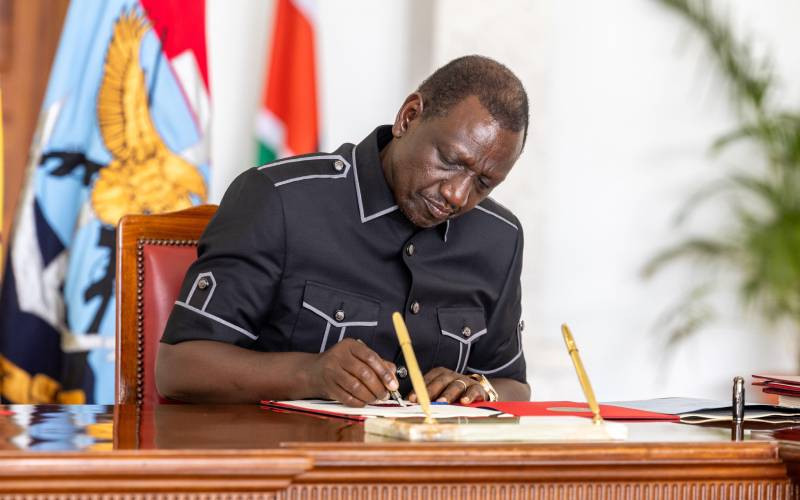 |
|
The move by KenGen is the latest in the country's ambition to have 5,000 MW of installed capacity over the next two years with the bulk of it coming from geothermal sources. |
Kenyans could soon pay less for electricity as the country begins the process of setting up an additional 210 megawatt of geothermal energy.
The State-owned Kenya Electricity Generating Company (KenGen) yesterday invited bids for the design and construction of two geothermal power plants with a combined capacity of 210 MW area in the Rift Valley region.
This is the latest addition to Kenya’s ambition to have 5,000 MW of installed capacity over the next two years with the bulk of it coming from geothermal sources.
KenGen Chief Executive Albert Mugo said a number of investors intending to come to Kenya have been concerned about availability of adequate power to drive their industries. “We have been using emergency power but we need to do away with this so that any investor coming is assured that there is enough power at the right price,” he said. Eng Mugo stated that KenGen, together with Kenya Power has been collecting data on the demand for energy in the country from developers and potential investors to map out the power demand in the country. “These power projects take a long time and that is why we launched the Plan for Power campaign so that we can know what developers are planning and their projected demand for energy,” he said.
The Government has estimated that the new 5,000 MW would be distributed across several new industries and projects planned for the near future. The new projects include iron smelting industries, expected to take up 1000 MW, the Standard Gauge Railway and the Lapsett project another 1000 MW and 700 MW for the Konza City project.
Idle capacity
However, some of these projects are running behind schedule and there is concern that the idle capacity will be counterproductive both to individual consumers and industries.
“We have received data that we are analysing and if we find that in the next five years there is less demand than what is being developed we shall scale down but also if there is high demand we shall equally scale up,” stated Eng Mugo.
Last week, Kengen disclosed that for the first time in the country’s history, geothermal power generation sources accounted for more power supply to the grid compared to traditional, rainfall-reliant hydro-electric generation. This new development has enabled the country stamp its authority as the continent’s largest producer of geothermal energy and a formidable force in renewable energy.
Already, the country is exporting energy generated from its geothermal wells in the Great Rift Valley
 The Standard Group Plc is a
multi-media organization with investments in media platforms spanning newspaper
print operations, television, radio broadcasting, digital and online services. The
Standard Group is recognized as a leading multi-media house in Kenya with a key
influence in matters of national and international interest.
The Standard Group Plc is a
multi-media organization with investments in media platforms spanning newspaper
print operations, television, radio broadcasting, digital and online services. The
Standard Group is recognized as a leading multi-media house in Kenya with a key
influence in matters of national and international interest.
 The Standard Group Plc is a
multi-media organization with investments in media platforms spanning newspaper
print operations, television, radio broadcasting, digital and online services. The
Standard Group is recognized as a leading multi-media house in Kenya with a key
influence in matters of national and international interest.
The Standard Group Plc is a
multi-media organization with investments in media platforms spanning newspaper
print operations, television, radio broadcasting, digital and online services. The
Standard Group is recognized as a leading multi-media house in Kenya with a key
influence in matters of national and international interest.








